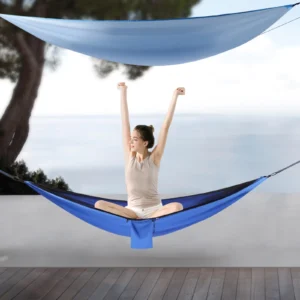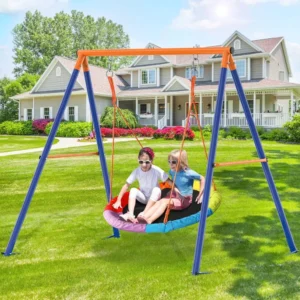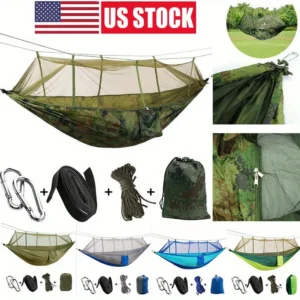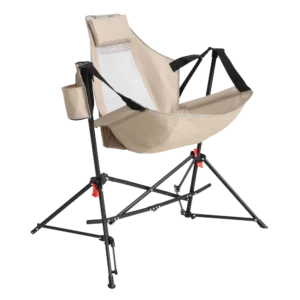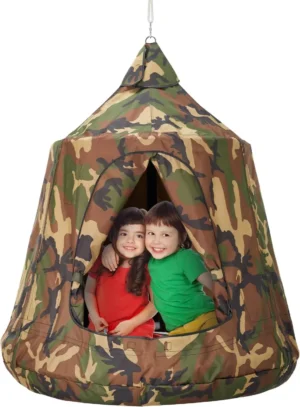Core Components for Optimal Weight Reduction
When it comes to backpacking, every ounce matters. Ultralight hammock camping—typically defined as systems weighing under 2-3 pounds (0.9-1.4 kg)—has gained popularity among outdoor enthusiasts seeking to minimize their load while maximizing comfort.
The benefits of going ultralight with your hammock setup are substantial:
– Reduced physical fatigue during hikes
– Increased mobility on the trail
– Quicker, easier setup and takedown
– More enjoyable overall experience
Traditional tent setups often weigh between 4-6 pounds (1.8-2.7 kg), while ultralight hammock systems can weigh as little as 1.5-3 pounds (0.7-1.4 kg). Some record-setting enthusiasts have even created complete setups weighing under 1 pound (0.45 kg)!
However, achieving these weight savings requires a systematic approach to reducing weight across your entire hammock system. While cutting weight is the goal, understanding the balance between weight reduction and maintaining comfort is crucial. Throughout this guide, we’ll explore each component of your hammock system and how to optimize it for minimal weight without sacrificing essential functionality.
Before diving into specific components, it’s worth noting that proper understanding placement principles is fundamental to ultralight hammock setup and will influence many of your gear choices. For those ready to invest in purpose-built gear, exploring specialized gear for minimal weight hammock camping can significantly reduce your overall pack weight.
Selecting an Ultralight Hammock Body
The hammock itself forms the foundation of your sleep system, making fabric selection crucial to weight reduction. When choosing an ultralight hammock, focus on these key elements:
Fabric Weight and Strength:
– Denier ratings indicate fabric thickness—lower numbers mean lighter fabric
– Lighter fabrics require more care but can significantly reduce weight
– Consider your body weight when selecting minimum fabric strength
Common Lightweight Hammock Fabrics:
| Fabric Type | Weight (oz/sq yard) | Relative Strength | Best For |
|————-|———————|——————-|———-|
| Monolite | 0.67 | Low | Ultralight enthusiasts |
| Hexon 1.0 | 1.0 | Medium | Light to average users |
| Standard 1.1 oz Ripstop | 1.1 | Medium-High | Versatile use |
Construction Considerations:
– Single layer designs weigh 30-40% less than double layer options
– Double layers provide more durability and allow pad insertion for insulation
– Optimal hammock length depends on your height—a hammock that’s 4 feet (1.2m) longer than your height is typically sufficient
– Excess fabric adds unnecessary weight
When selecting between a 9’ (2.7m) versus an 11’ (3.4m) hammock, consider that while the longer hammock weighs more, it often provides a flatter lay that may reduce insulation needs—a trade-off worth considering for comfort-conscious ultralight campers.
Exploring various hammock options designed for camping can help you find the perfect balance between weight and comfort for your specific needs and body type.
Ultralight Suspension Systems
Suspension systems have evolved dramatically from heavy ropes and carabiners to sophisticated ultralight options that save significant weight without compromising safety.
Modern Ultralight Suspension Options:
– Whoopie Slings: These adjustable suspension components use a finger-trap design that allows easy length adjustment while providing excellent strength-to-weight ratio.
– Ultralight Tree Straps: Look for polyester or polypropylene webbing that’s at least 0.75” (19mm) wide to prevent tree damage while minimizing weight.
– Knotless vs. Knot-based Systems: Knotless systems like cinch buckles and hardware-based connectors are typically heavier but easier to adjust, while knot-based systems save weight but require some skill.
– Continuous Loops: These replace heavy carabiners at hammock connection points.
Weight Comparison of Common Suspension Systems:
| System Type | Weight | Ease of Use | Durability |
|————-|——–|————-|————|
| Traditional rope/carabiners | 8-12 oz (227-340g) | Moderate | High |
| Webbing with buckles | 4-6 oz (113-170g) | High | High |
| Whoopie slings/tree straps | 2-3 oz (57-85g) | Moderate | Medium-High |
| Dyneema suspension | 1-2 oz (28-57g) | Lower | Medium |
The minimum safe width for tree straps (0.75”/19mm) isn’t arbitrary—it’s based on preventing damage to tree bark by distributing the pressure over a wider area. Going below this width may save a few grams but can damage trees and is discouraged by Leave No Trace principles.
Proper understanding of hammock installation requirements and safety is essential when optimizing suspension systems, as going too light can compromise structural integrity.
Minimalist Weather Protection: Tarp Selection
Your tarp provides critical protection from the elements, but can also be one of the heavier components in your system. Strategic tarp selection can yield significant weight savings.
Tarp Shapes and Coverage Efficiency:
– Asymmetrical tarps: Designed specifically for diagonal hammock sleeping positions, these offer the minimum adequate coverage for the least weight.
– Diamond tarps: Provide good coverage-to-weight ratio with versatile setup options.
– Hex tarps: Offer more coverage than asymmetrical or diamond tarps with modest weight increase.
– Rectangular tarps: Provide maximum coverage but weigh the most.
Ultralight Tarp Materials:
| Material | Weight for 11’ Coverage | Waterproofing | Durability | Packed Size |
|———-|————————-|—————|————|————-|
| DCF (Dyneema) | 5-7 oz (142-198g) | Excellent | Good | Very small |
| Silnylon | 8-10 oz (227-283g) | Very good | Very good | Small |
| Silpoly | 10-12 oz (283-340g) | Excellent | Excellent | Small |
| Standard Nylon | 15-18 oz (425-510g) | Good | Good | Medium |
When selecting a tarp, consider your typical camping environment. Desert and fair-weather campers can opt for smaller, lighter coverage, while those in rainy regions might want more generous coverage. The key is finding the minimum coverage that meets your needs rather than automatically choosing maximum protection.
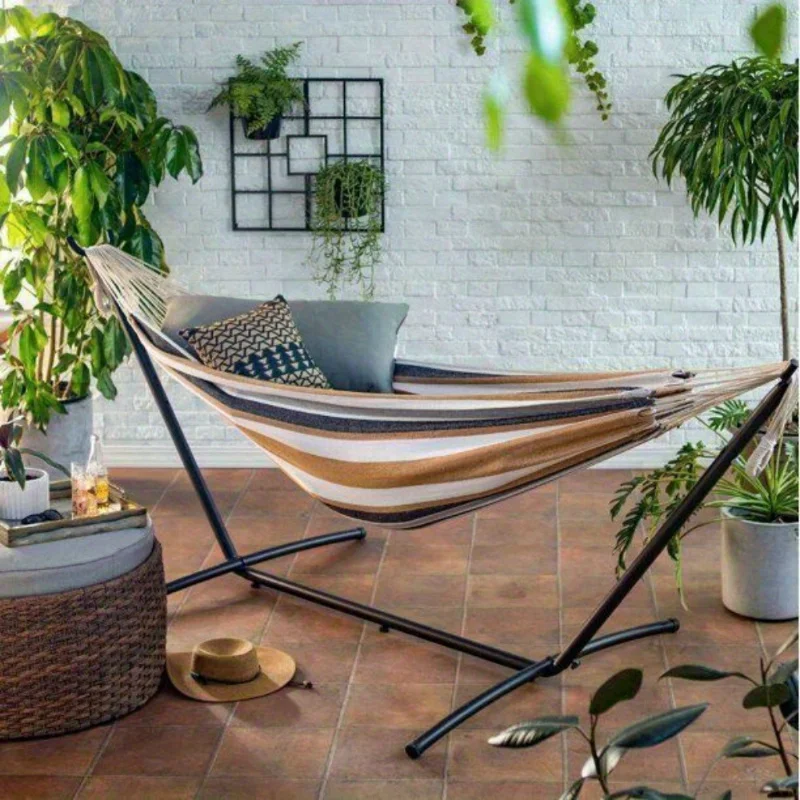
Exploring lightweight hammock options with integrated weather protection can be an efficient way to ensure compatibility between your hammock and tarp systems while minimizing overall weight.
Ultralight Insulation Strategies
Insulation presents unique challenges for hammock campers because your underside is exposed to air circulation, creating significant heat loss through convection—a phenomenon known as “Cold Butt Syndrome.” Addressing this efficiently is crucial for ultralight setups.
Underquilt Options:
– Full-length: Covers from shoulders to feet, providing maximum warmth (12-16 oz/340-453g)
– 3/4 length: Covers shoulders to knees, requiring alternative insulation for feet (8-12 oz/227-340g)
– 1/2 length: Covers only core area, lightest option but requires additional insulation (6-8 oz/170-227g)
Fill Material Considerations:
– Down: Superior warmth-to-weight ratio, compresses smaller, but loses insulating properties when wet
– Synthetic: Maintains insulation when damp, typically 30-50% heavier than comparable down
– Fill power: Higher numbers (800+) indicate better quality down that provides more loft and insulation per ounce
Top Insulation:
Instead of traditional sleeping bags, top quilts offer significant weight savings (20-30% less) by eliminating unnecessary bottom material that gets compressed in a hammock.
Temperature Rating Strategy:
For ultralight setups, consider a modular approach—insulation appropriate for your most common conditions, with supplemental layers for occasional colder trips.
Choosing the right camping location affects insulation needs significantly. Protected locations with natural windbreaks may allow for lighter insulation options while maintaining comfort.
Minimalist Bug Protection Solutions
Bug protection is seasonal and regional, making it an area where strategic choices can yield significant weight savings.
Integrated vs. Detachable Protection:
– Integrated bug nets add 5-7 oz (142-198g) to hammock weight but offer seamless protection
– Detachable full-coverage nets weigh 7-11 oz (198-312g) but provide flexibility for bug-free seasons
– Minimalist “head net” solutions weigh just 1-2 oz (28-57g) but protect only your upper body
– Bug net “doors” or partial coverage options weigh 3-5 oz (85-142g) and provide balanced protection
Mesh Considerations:
– No-see-um mesh offers protection from the smallest insects but weighs more and restricts airflow
– Standard mesh is lighter and more breathable but may not stop the smallest bugs
Alternative Approaches:
– Treating clothing and hammock fabric with permethrin can reduce the need for physical barriers
– Careful site selection away from standing water can minimize bug pressure
For those who camp frequently in bug-heavy environments, exploring hammock options with integrated bug protection might be worth the slight weight penalty for convenience and reliable protection.
Ridgelines and Structural Elements
Structural ridgelines ensure consistent hammock sag for optimal comfort regardless of hang distance. While seemingly minor, optimizing these elements can yield meaningful weight savings.
Ridgeline Considerations:
– Fixed ridgelines maintain proper sag automatically (typically 83% of total hammock length)
– Adjustable ridgelines offer versatility at a small weight penalty
– Ultralight cordage options dramatically reduce weight:
* Standard paracord: 0.8-1.0 oz (23-28g) per 11’ length
* Zing-it/Lash-it: 0.2-0.3 oz (6-8g) per 11’ length
* Dyneema core line: 0.1-0.2 oz (3-6g) per 11’ length
Multi-purpose Ridgelines:
– Can serve as attachment points for gear storage
– May support bug netting
– Can provide a convenient place to hang small items
Breaking Strength Considerations:
Dyneema offers the best strength-to-weight ratio, with 1.75mm line providing over 500 lbs breaking strength at minimal weight.
Learning proper techniques for efficiently packing ridgelines and other components helps minimize bulk while protecting these lightweight components from damage.
Ultralight Stakes, Guylines, and Hardware
Stakes, guylines, and hardware may seem insignificant individually, but collectively can add substantial weight to your system. Optimizing these components offers excellent weight-saving opportunities.
Stake Options:
| Material | Weight per Stake | Strength | Best For |
|———-|——————|———-|———-|
| Aluminum | 0.5-0.7 oz (14-20g) | Good | General use |
| Titanium | 0.2-0.4 oz (6-11g) | Excellent | Ultralight |
| Carbon fiber | 0.15-0.25 oz (4-7g) | Moderate | Ultralight in soft soil |
Natural Anchoring:
Using rocks, roots, or trees as anchor points can reduce the number of carried stakes. In many environments, you might need only 2-4 stakes rather than 6-8.
Guyline Optimization:
– Dyneema or Spectra guylines offer tremendous strength at minimal weight
– Line tensioners add convenience but weight; learn simple adjustable knots instead
– Carry only the minimum length needed based on your typical setup
Hardware Reduction:
– Replace metal hardware with toggle systems made from small sticks
– Eliminate cord locks in favor of simple knots
– Use continuous loops instead of carabiners when possible
Exploring integrated systems with optimized components can ensure all these elements work together harmoniously while minimizing overall weight.
Beyond Basic Components: Strategic Weight Reduction
The Multi-Purpose Gear Philosophy
The ultralight philosophy emphasizes that the lightest gear is what you don’t carry. Multi-purpose items embody this principle by serving multiple functions.
Effective Multi-Purpose Strategies:
– Use your pack liner dry bag as a sit pad or pillow (-2 oz/57g)
– Employ a bandana as pot holder, washcloth, and water pre-filter (-3 oz/85g)
– Utilize trekking poles as tarp supports rather than dedicated poles (-4 oz/113g)
– Repurpose clothing items as pillow stuffing
– Use food packaging for water collection or organization
Digital Multi-Use:
Your smartphone can replace numerous individual items:
– Books and reading material
– Camera
– Map and compass (with appropriate backup)
– Notepad
Redundancy Elimination:
Analyze your gear for functional overlap and eliminate duplicates. For example, if your pocket knife has scissors, you don’t need separate scissors.
Understanding hammock weight limits and capacity helps ensure your multi-purpose system remains safe even as you optimize and consolidate gear.
Smart Site Selection for Weight Efficiency
Strategic site selection can reduce the gear you need to carry by taking advantage of natural features.
Weight-Saving Site Selection Strategies:
– Choose locations with natural wind barriers to reduce insulation requirements
– Find optimal tree spacing (12-15 feet/3.7-4.6m apart) to minimize suspension length and weight
– Utilize natural overhead protection (dense tree canopy) to potentially use a smaller tarp
– Select low-bug-density areas to minimize bug protection needs
– Consider proximity to water sources to reduce carried water weight
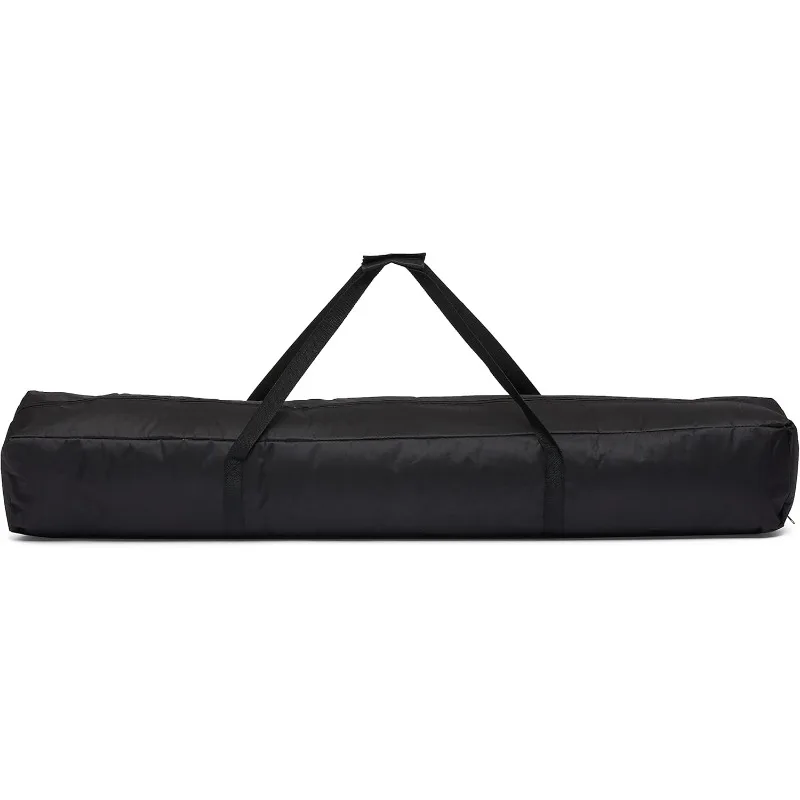
Proper site selection can reduce carried weight by 8-16 oz (227-453g) through decreased insulation, weather protection, and water needs. When calculating water needs, remember that water weighs approximately 2.2 lbs per liter (1 kg per liter), making it one of the heaviest items in your pack.
Learning when it’s appropriate to leave hammock gear exposed to the elements can help you make better decisions about site selection and protection requirements.
Technical Setup for Maximum Efficiency
Mastering the 30-Degree Hang Angle
The physics of hammock hanging directly impacts both comfort and the weight requirements of your system.
Why 30 Degrees Matters:
– At a 30-degree angle from horizontal, forces on your suspension system are minimized
– Force calculations demonstrate the dramatic difference:
* 30-degree angle: your body weight × 1.15 force on each anchor point
* 20-degree angle: your body weight × 1.5 force
* 10-degree angle: your body weight × 2.9 force
This means a 180 lb (82 kg) person creates only 207 lbs (94 kg) of force on each anchor with a 30-degree angle, but a massive 522 lbs (237 kg) of force at a 10-degree angle. This directly affects the strength requirements—and thus weight—of your entire suspension system.
Quick Measurement Techniques:
– The “fist method”: When your suspension forms a 30-degree angle, your fist with thumb extended should fit perfectly between the suspension line and an imaginary horizontal line
– For most people, this means the hammock should hang about 18” (46cm) from the attachment point
Understanding proper hammock placement principles applies to both home and backcountry settings, ensuring optimal comfort and minimal stress on equipment.
The Diagonal Lay: Flat Sleep with Less Material
Lying diagonally in your hammock creates a surprisingly flat sleeping surface while potentially allowing for a narrower (and therefore lighter) hammock.
Optimizing Your Diagonal Position:
– Aim for 30-45 degrees from the hammock centerline
– Position your head slightly to one side and feet to the opposite side
– This creates a flatter sleeping surface by using the hammock’s natural geometry
Material Efficiency:
– Proper diagonal positioning can allow for a hammock that’s 6-12” (15-30cm) narrower
– This reduction saves approximately 1-3 oz (28-85g) of fabric weight
– Asymmetrical hammock designs capitalize on diagonal sleeping by reducing fabric in non-essential areas
Body Position Considerations:
– Different body types benefit from slightly different diagonal angles
– Experiment with foot and head positions to find your optimal arrangement
– Shoulder position typically determines comfort—keep them flat rather than compressed
DIY Modifications for Weight Reduction
Simple modifications to existing gear can yield significant weight savings without purchasing new equipment.
Effective Modification Strategies:
– Trim excess webbing from suspension straps (leaving adequate safety margin)
– Replace heavy cordage with lighter options
– Cut sleeping pads to hammock width or to a “mummy” shape
– Remove unnecessary features from commercial products
– Repackage commercial products (like first aid supplies) into lighter containers
Common Modifications and Savings:
– Trimming tree straps to optimal length: -1 oz (28g)
– Replacing cord locks with simple knots: -0.5 oz (14g)
– Cutting sleeping pad to hammock shape: -2-4 oz (57-113g)
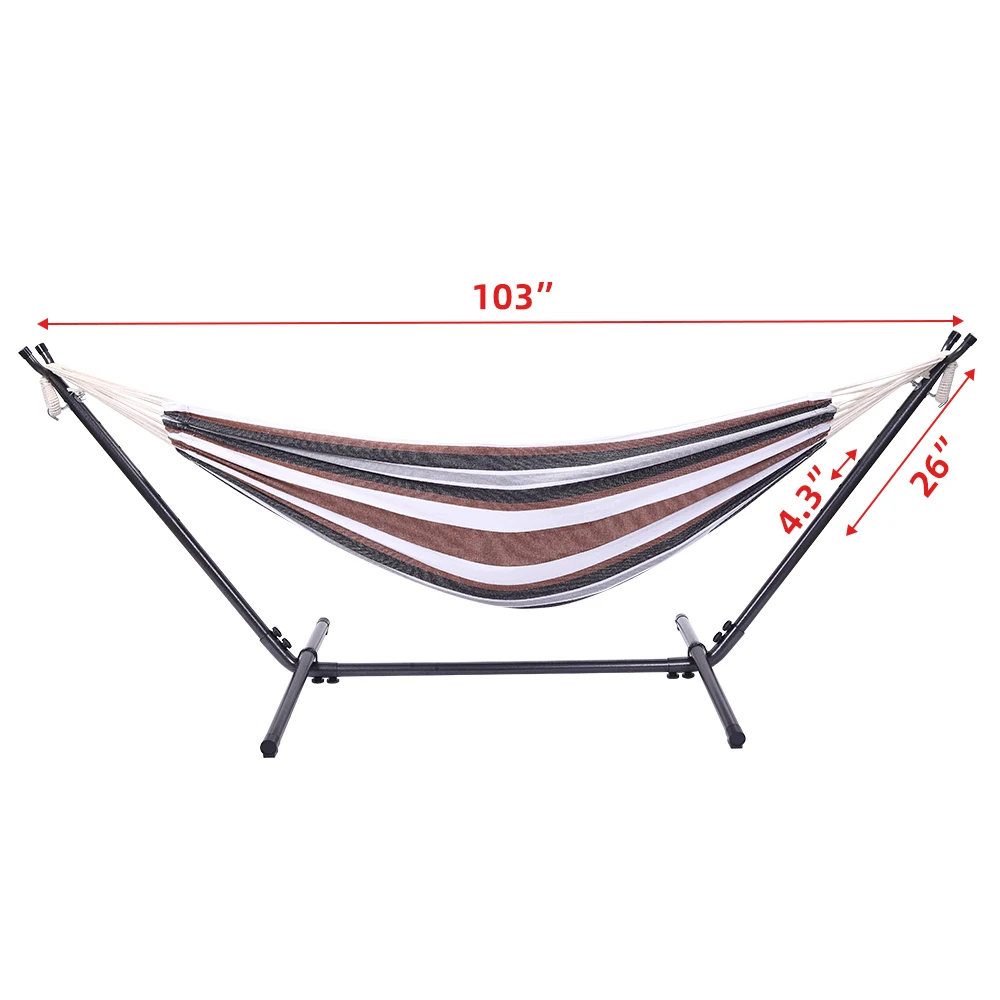
Safety Considerations:
– Always maintain adequate safety margins when modifying load-bearing gear
– Test modifications at home before relying on them in the backcountry
– Consider bringing original components on your first trip with modified gear as backup
Making Smart Decisions for Your Setup
Understanding Tradeoffs: Weight vs. Comfort vs. Durability
Every ultralight decision involves balancing competing priorities of weight, comfort, and durability.
Decision Framework for Different Scenarios:
– Weekend Trips: Prioritize comfort with moderate weight savings
– Thru-Hiking: Balance weight savings with strategic comfort items
– Ultralight Focused Trips: Maximize weight savings with calculated comfort compromises
– Winter Camping: Emphasize durability and safety over minimum weight
The “Lightest Appropriate” Philosophy:
Rather than seeking the absolute lightest option, focus on the lightest option that meets your specific needs, considering:
– Your physical condition and comfort requirements
– Typical weather conditions in your region
– Trip duration
– Personal sleeping style
Diminishing Returns Concept:
Weight reduction follows a curve of diminishing returns—the first 2-3 pounds (0.9-1.4 kg) are relatively easy to eliminate, but each subsequent ounce becomes increasingly expensive and may compromise comfort or safety.
Exploring quick-setup hammock systems can help you balance setup speed with weight considerations, especially important for frequent camp changes or unpredictable weather.
Camping Hammock Sets with Bug Net, Ultralight Camping Hammock Sets
$139.72 Select options This product has multiple variants. The options may be chosen on the product pageFolding Hammock Sets, Quick Setup Hammock Sets
Price range: $305.52 through $583.27 Select options This product has multiple variants. The options may be chosen on the product pageCamping Hammock Sets with Bug Net, Complete Camping Hammock Systems
Price range: $82.73 through $97.96 Select options This product has multiple variants. The options may be chosen on the product pageFolding Hammock Sets, Lightweight Hammock Sets
$295.80 Select options This product has multiple variants. The options may be chosen on the product pageComplete Camping Hammock Systems, Hanging Egg Chair Sets
$266.73 Select options This product has multiple variants. The options may be chosen on the product page
Supplemental Content: Advanced Considerations
Environmental Impact of Ultralight Gear Choices
Weight reduction shouldn’t come at the expense of environmental responsibility.
Material Sustainability Considerations:
– Ultralight materials like DCF (Dyneema) are petroleum-based and not biodegradable
– Natural fibers may weigh more but have less environmental impact
– Durability affects replacement cycle and overall environmental footprint
Tree Protection:
– Minimal width straps (0.75”/19mm minimum) protect tree bark
– Wider straps distribute pressure more effectively
– Some ultralight suspensions can damage trees—choose responsibly
Leave No Trace Principles:
– Pack out all waste
– Minimize campsite impact
– Use established sites when possible
Packing Strategy for Balanced Weight Distribution
How you pack your ultralight hammock system affects both comfort on the trail and setup efficiency.
Efficient Packing Techniques:
– Pack hammock components in reverse order of setup
– Keep weather protection items quickly accessible
– Use compression techniques appropriate to material (rolling vs. stuffing)
– Distribute weight evenly in your pack for better balance
Quick-Access Organization:
– Store tarp separately for rapid deployment in sudden weather
– Keep suspension system accessible for quick setup assessment
– Group small components in lightweight stuff sacks by function
Special Considerations: Winter and Desert Hammocking
Ultralight principles require adaptation for extreme conditions.
Winter Hammocking:
– Insulation becomes critical—minimum safe setups typically weigh 4-5 pounds (1.8-2.3 kg)
– Full-coverage tarps often necessary
– Backup emergency options are essential
Desert and Treeless Regions:
– Portable hammock stands weigh 1-3 pounds (0.45-1.4 kg)
– Natural features like rock formations may offer attachment points
– Consider alternative shelters when appropriate
Emergency Considerations:
– Carry a minimal emergency bivvy (2-3 oz/57-85g) for unexpected situations
– Redundant critical components may justify their weight
Conclusion: Creating Your Perfect Ultralight Hammock System
Developing your ultralight hammock system is a personal journey that balances weight reduction with your comfort needs and camping conditions. By systematically analyzing each component, you can create a setup that’s perfect for your specific requirements.
Sample Ultralight Hammock Setups:
– Super Ultralight: Under 1.5 pounds (0.7 kg) total
– Ultralight: Under 2.5 pounds (1.1 kg) total
– Lightweight: Under 3.5 pounds (1.6 kg) total
Remember that skills often weigh nothing but can replace gear. Learning proper site selection, setup techniques, and weather prediction can reduce your reliance on heavier gear while maintaining comfort and safety.
Start with modest weight reduction goals, test your system in safe environments, and gradually refine it based on real-world experience. The ultimate ultralight hammock system balances minimal weight with maximum enjoyment—a goal worth pursuing one ounce at a time.


